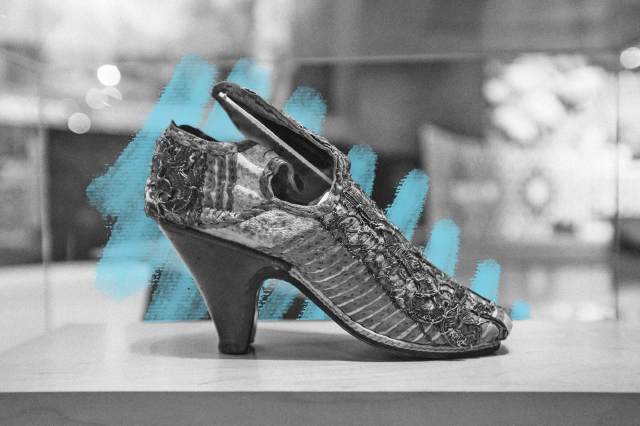Were high heels designed for men?
Tuesday, July 16, 2024
Long before the days of stilettos and pumps, kitten heels and wedges, high-heeled shoes were worn by men. |
| |
| |
|
 |
|
| L ong before the days of stilettos and pumps, kitten heels and wedges, high-heeled shoes were worn by men. As far back as the 10th century, Persian soldiers and emissaries wore heels when riding, battling, or traveling to faraway lands. These heels weren't for show, however; they were for function. When a soldier wore heeled boots on a horse, he was able to better steady himself and generate more balance both for riding and fighting. Persian soldiers were also able to stand upright in their stirrups, positioning their feet so the space between the heel and the sole was snug in the stirrup, which gave them an advantage in battle. |
|
|
| Once heels made their way to Europe in the 16th century, their purpose was much more akin to how we think of these shoes today. Men in the French, Spanish, German, and Russian courts wore heels to project height and physical stature in order to intimidate rivals and foreign diplomats in court. Over the course of the next 200 years, men's heels got shorter and stockier — making the shoes better for balance and walking, and less of an ornate fashion statement. By the 18th century, high heels faded out of fashion for men, who started to favor less flamboyant clothing and accessories. When women started to wear high heels, the goal was to hide as much of the foot as possible beneath a long skirt. The peeking toe suggested a small foot, showing daintiness. Though sneakers are far more popular than heels today, the concept of the "platform sneaker" suggests that the ethos of the high heel is not yet a thing of the past. |
|
 |  |
|
|
 |
|
| |
|
| Height of famed shoe collector King Louis XIV of France | | | 5'3" |
| | | Year Persian emissaries arrived in Europe with an extra boost from their heeled shoes | | | 1599 |
| | | Year Persian emissaries arrived in Europe with an extra boost from their heeled shoes | | | 1599 |
|
|
|
| Height of the largest high heel ever built | | | 9'3" |
| | | Highest price paid for a pair of shoes (Michael Jordan's sneakers from the 1998 NBA Finals) | | | $2.2 million |
| | | Highest price paid for a pair of shoes (Michael Jordan's sneakers from the 1998 NBA Finals) | | | $2.2 million |
|
|
|
 |
|
 | | Did you know? |
|
|
Red soles and heels date back to the 17th century. |
|
| Red-bottomed shoes are most often attributed to the contemporary fashion designer Christian Louboutin, yet footwear with red soles and heels dates all the way back to 17th-century France and England. King Charles II's coronation portrait from 1661 displays him wearing red-soled heels, known as the "French style," which were popular in England during that time. Red was a popular color for royalty due to the pricey nature of the dye, and the color came to symbolize power and masculinity. |
|


posted by June Lesley at 4:01 AM











![]()
![]()







0 Comments:
Post a Comment
<< Home